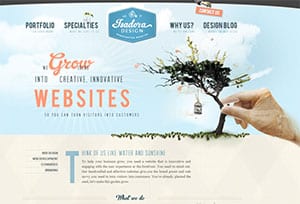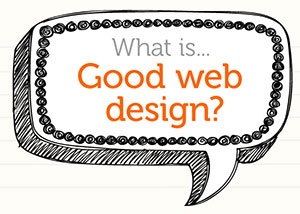Simplify Your Website Design
In most website designs (and print as well) simplicity conveys elegance and refinement. The sleek lines and streamlined look makes navigating a website easier. Not only that, it can persuade leads to sign up and increase sales. However, this apparently straightforward goal can be quite hard to attain. How do you achieve that simple look?
Well, you can start right here. I’ve written the following tips to help you simplify your web design!
Let’s get started.

The most important thing you can do is put yourself in the mindset of your visitors. Look at your page the way that they would. Look at each element on the page, each call to action, and each widget.
Then, ask yourself the following questions:
What is it?
Who is it for?
Why use it?
Once you’ve answered them, you’re ready to move on to the next step.
Focus on the Essential
When designing a website, it can seem like everything is essential. When you consider every single element to be important, you can end up with a giant mess on your webpage. And trust me, nobody likes that. So, the question is, how do your reduce it to the bare minimum? Here’s how: identify what the focus is. Lead with that and the rest will follow. So then, how do you find that focus? You use the 80-20 rule.
The 80 – 20 Rule
Ask yourself the following: what 20% of a page gives you 80% of the value? Whatever the answer is, be it the copy, the signup form, the social proof or call to action button, that is where your focus should be.
The 80-20 rule will help to simplify your website by eliminating the nonessential. This leads to less distractions for visitors. Don’t give them any excuse to click away from your site.
Throw it Out
Once you’ve thoroughly applied the 80-20 rule throughout your website, can you guess what comes next? That’s right! It’s time to throw it out. Get rid of all of the unnecessary elements on your website. Some of the usual suspects here are, but not limited to, blog post meta details, media sharing widgets, footer links, and more. If you’ve learned to apply the 80 -20 rule, you’ll know it when you see it.
Page Count
An integral part of simplifying your website is to simply cut back on the total number of pages. By reducing the page count, visitors will have fewer places to get lost in. The worst you can do is overwhelm them with too many options. By keeping things clean, your navigation becomes much more enjoyable. This will persuade users to stay on your site.
Now, if you feel like you just can’t get rid of certain pages, I would suggest collapsing multiple pages into one simple page.
Stay Above the Fold
The majority of people spend most of their time above the fold on webpages. This is the area visible on screen without having to scroll down. In order to increase the impact of your website, I would suggest placing the most important elements above the fold. Don’t make your visitors search for the main content and call to actions!

In order to visually simplify your website, keep your color choices to a minimum. I would suggest choosing 2 to 3 main colors. By keeping the palette limited, it helps your visitors focus on what’s important. If you need to add subtlety or texture, I would suggesting using shades of the same color.
Conclusion
By following these tips, you should be well on your way to a simplified yet elegant website. Your visitors will delight in every click and navigate with ease through your streamlined layout.
I hope you’ve enjoyed these simple tips. Comments and questions are welcome!



